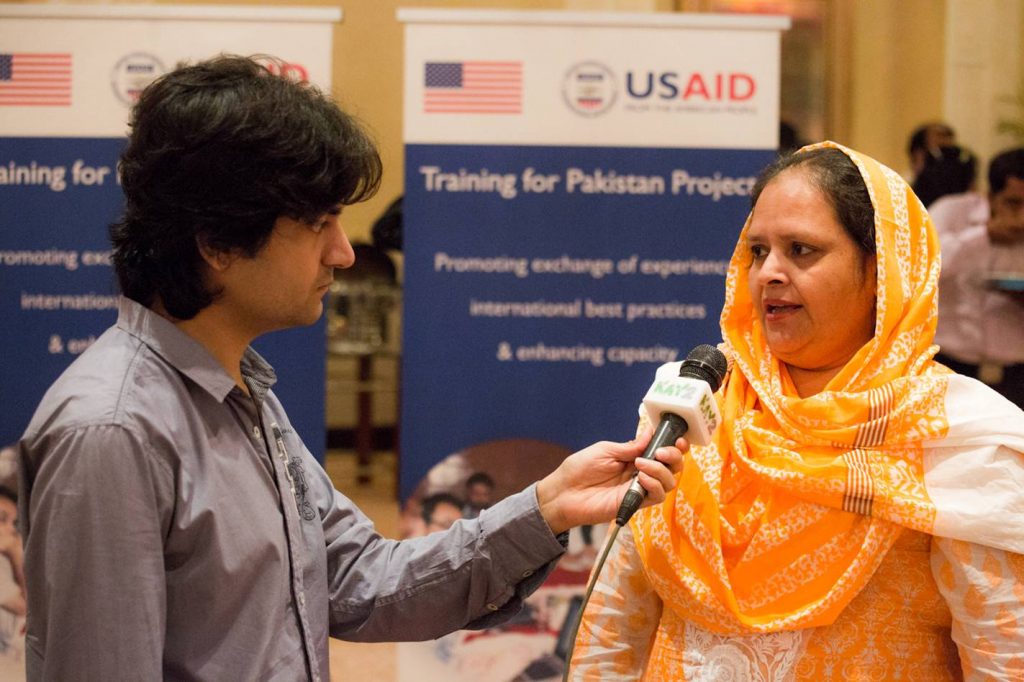 Study tour offers new ideas for addressing gender-based violence. Islamabad, 9-6-12. Dr. Atifa Naheed, Assoc Prof at King Edward Medical University talks to a media representative. Wikimedia/USAID Pakistan.
Study tour offers new ideas for addressing gender-based violence. Islamabad, 9-6-12. Dr. Atifa Naheed, Assoc Prof at King Edward Medical University talks to a media representative. Wikimedia/USAID Pakistan. Hackathons and other well-intentioned efforts to solve social problems using technology must also include the meaningful participation of affected individuals and communities. Otherwise, technologists may start from an incomplete or monolithic understanding of the problem, as illustrated by common technology solutions for gender-based violence (GBV).
User-centered design approaches require the meaningful inclusion of diverse voices from the earliest stages of problem definition.
Panic button apps are an example of a “solution” built from misconceptions about GBV. These apps are designed to allow users to contact emergency services or a trusted contact by tapping the screen or shaking the phone. This approach is based on the popular conception of sexual violence as random attacks by strangers, when in fact the vast majority of sexual violence is committed by someone known to the victim [1]. These apps also replicate a core feature of any phone—the ability to make a phone call by tapping the screen.
When technology solutions are designed to address less common scenarios, they divert needed innovation resources from more widely effective approaches. For example, nearly half of the Americans admitted to surveilling a partner or ex-partner using technology [2]. Online harassment targeting people based on gender is all too prevalent and can have devastating effects [3]. Technologists could re-focus efforts on addressing these far too common realities.
User-centered design approaches require the meaningful inclusion of diverse voices from the earliest stages of problem definition [4], increasing the likelihood of success for a technology solution. This approach is applicable in many use cases beyond GBV. As with curb cuts in sidewalks for wheelchairs and strollers, solutions designed with users and communities as partners can end up making life safer and easier for everyone.
Partnering with users and communities from the start is crucial to designing technology in the public interest. What we do not need is another panic button.
Author Information
Toby Shulruff is a Senior Technology Safety Specialist at the National Network to End Domestic Violence Washington, DC, USA, and a graduate student in the Public Interest Technology program at Arizona State University, Tempe, AZ, USA. Email: tshulruf@asu.edu.
To read the full version of this article, including references, click HERE.






 JOIN SSIT
JOIN SSIT